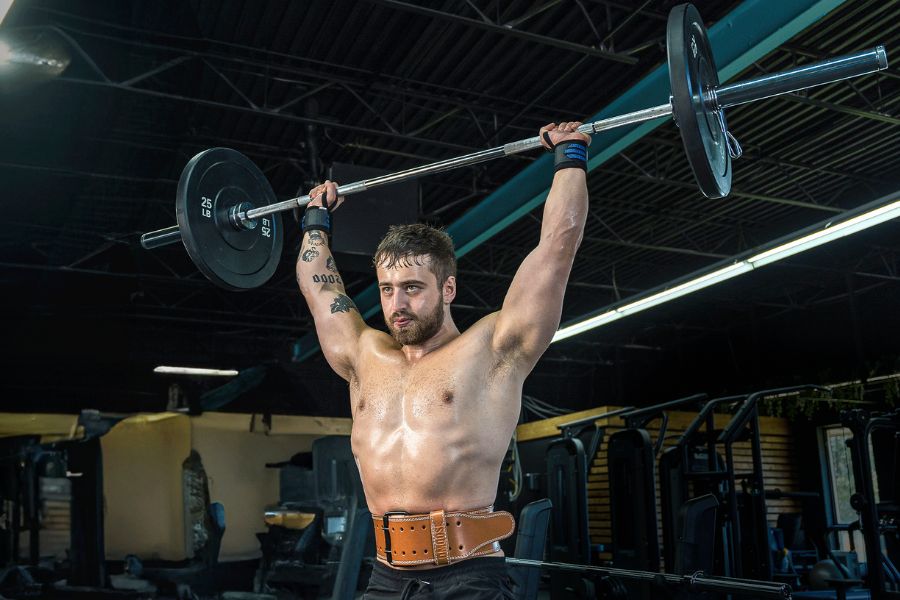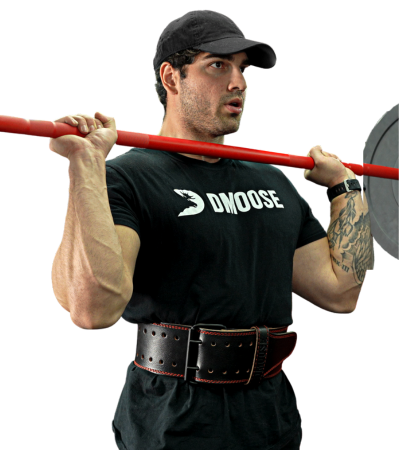When it comes to doing an overhead press, every detail counts; whether it's about your grip or the equipment you use. But the main question that circulates in a gym community is whether you should use a weightlifting belt to do overhead presses or not.
Overhead press requires you to lift weight over your shoulders, pressing it in the upward direction. Many people wear weightlifting belts while performing this workout.
But how can a weightlifting belt make your overhead workout more impactful?
Let’s Find out!
Can Wearing a Weightlifitng Belt for Overhead Press Increase Performance?
Yes, wearing a weightlifitng belt for overhead presses can increase your workout performance. A weightlifting belt provides extra stability and core support, allowing you to lift heavier weights with better form. It helps maintain proper spinal alignment and reduces injury risk. As a result, you can push your limits and improve overall lifting performance.
There are many reasons to use a lifting belt while doing an overhead press.
- A lifting belt helps you to keep your back stable and gives it strength to lift heavy weights so that it does not hurt after workouts.
- It also helps you to make robust progress in your fitness journey.
- That's not it. Weightlifting belts are best for muscle weakness, as they make it easier to lift heavy weights without causing muscle pain.
- Wearing a belt also helps you improve your posture.
Benefits of Wearing a Lifting Belt During OHP

You can experience amazing benefits by wearing a lifting belt during the overhead press. Here are some of the benefits you can achieve by using a lifting belt:
Enhanced Performance
When you wear a lifting belt, it provides pressure to the abdomen that stabilizes your spine, and you feel supported to lift heavier weights without any problem.
It’s great to progress in your weight training and build more stamina.
Minimize Strain on Lower Back
The basic purpose of the weightlifting belt is to increase intra-abdominal pressure, which provides support to the spine.
During overhead press, the spine can be subjected to significant compressive forces, especially in the lower back region, that cause back pain, and by weightlifting belt, this issue can be solved instantly.
Improve Stability and Posture
The common mistakes people make during OHP (overhead press) lift are not keeping their back straight and maintaining proper posture.
The weightlifting belt works as a reminder to keep your back straight and avoid overarching or rounding.
Focus Target Muscles
The muscle groups worked during overhead press are deltoids, triceps, upper portion of the pectoralis major, core, and upper back muscles.
The stability provided by the weightlifting belt helps to concentrate on the specific muscles you're working.
This mind-muscle connection helps to focus on targeted muscles better.
Related Article: What Does a Weightlifting Belt Do? 5 Benefits You Should Know
Drawbacks of Wearing a Lifting Belt for Overhead Press
Along with the benefits, there comes the drawback. The following are some drawbacks of using a weightlifting belt during overhead press:
Over-Reliance
Regular use of weightlifting belts makes you completely reliant on them.
They can retard your personal growth and development of the body's natural core strength and stability.
Slower Muscular Development
Wearing a weightlifting belt can slow muscular development, particularly in the core muscles.
It provides external support that can reduce the need for these muscles to work as hard to stabilize the body during lifts.
Elevated Blood Pressure
Weightlifting belts can cause an increase in your blood pressure because it increases intra-abdominal pressure when tightly fastened.
This pressure can reduce the return of blood to the heart, leading to a rise in blood pressure.
Not Suitable for All Lifters
This belt is not great for beginners because they might become dependent on the belt before developing proper core strength and lifting techniques.
It stops their progress and prevents them from building stamina to work out.
Choosing the Best Weightlifting Belt: Key Factors

Selecting the right weightlifting belt can significantly impact your performance and safety during heavy lifts. Here are the essential features to look for in a quality weightlifting belt:
Optimal Thickness

A belt with optimal thickness offers exceptional stability during heavy lifts. For example, belts around 5mm thick provide the right balance of support and flexibility, ensuring you can maintain proper form while lifting significant weights.
Powerlifting Specialty
If you're focused on powerlifting routines, choose a belt designed specifically for this purpose. A powerlifting belt is tailored to support the intense demands of powerlifting exercises, helping you achieve optimal performance.
Top Quality

Quality is crucial when it comes to weightlifting belts. Look for belts made from high-quality, authentic leather. This material not only ensures lasting durability but also provides the rigidity needed for both weightlifting and powerlifting routines.
Lumbar Support
Excellent lumbar support is a key feature of a good weightlifting belt. It helps maintain proper spinal alignment and reduces the risk of lower back injuries. This support is essential for safer lifting, especially when handling heavy weights.
Double Pronged Buckle
A secure fit is vital for any lifting belt. A double pronged buckle ensures the belt stays firmly in place during all lifts. This feature provides added security and prevents the belt from loosening mid-lift, allowing you to focus on your performance.
By considering these key factors, you can choose the best weightlifting belt that meets your needs and enhances your lifting experience.
Which Type of Weightlifting Belt to Choose?

|
Belt Type |
Image |
Ideal for |
Exercises |
Shop from DMoose |
Shop from Amazon |
|
Prong Belts |
|
|
|||
|
Lever Belts |
|
|
|||
|
Velcro Belts |
|
|
When selecting a weightlifting belt, it's important to understand the different types available and their specific benefits. Choosing the right type of weightlifting belts depends on your specific lifting needs and preferences.
By understanding the features and benefits of each type, you can select the best weightlifting belt to enhance your performance and safety. Here's a guide to help you choose the right type of belt for your needs:
Prong Belts

Prong belts, available in single or double prong varieties, are adjustable and secure. They use one or two metal prongs to fasten the belt, allowing for a customizable fit.
Double prong belts offer added security, while single prong belts are easier to adjust. These belts are versatile and suitable for both weightlifting and powerlifting.
Lever Belts

Lever belts are known for their quick and easy adjustments. They use a lever mechanism to secure the belt, allowing for a snug fit with minimal effort. These belts are ideal for powerlifters who need a consistent and tight fit during their lifts.
The lever mechanism ensures that the belt stays in place, providing excellent stability and support.
Velcro Belts

Velcro belts are lightweight and easy to adjust, making them a popular choice for casual lifters and those who prioritize comfort. They use Velcro straps to secure the belt, allowing for quick adjustments. However, they may not provide the same level of support as leather or prong belts, making them less ideal for heavy lifting.
How to Wear a Weightlifting Belt for Overhead Press?
A proper technique for wearing a lifting belt is important to get its full advantage and perform the exercise without any discomfort. You can also wear other overhead press accessories along with a weightlifting belt to perform the overhead press.
Here is a video having complete instructions to wear and adjust the weightlifting belt:
Overhead Press Variations
Here are some variations of overhead presses that you can perform to add variety to your workout routine:
1. Seated Dumbbell Overhead Press
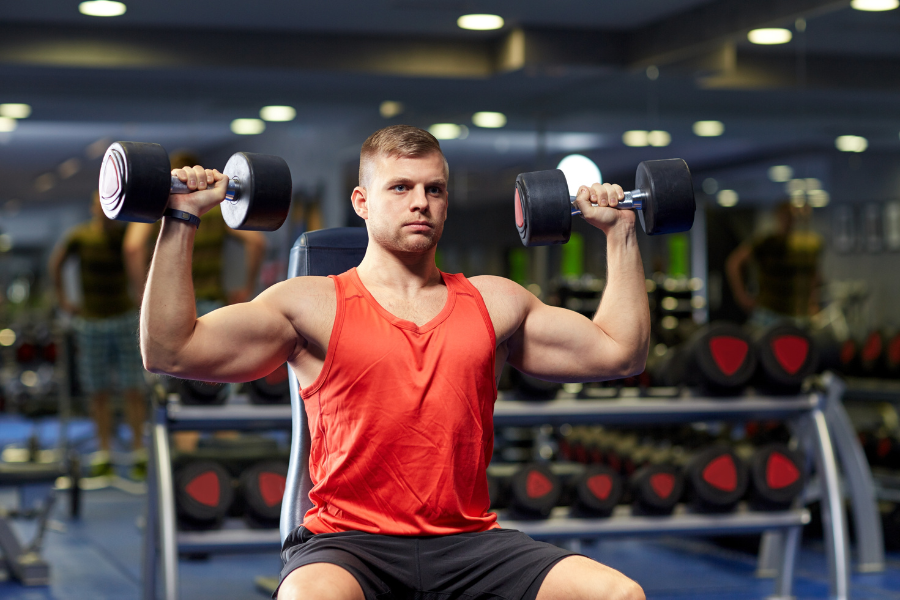
The Seated Dumbbell Shoulder Press is a popular exercise in weight training and bodybuilding routines. It primarily targets the muscles in the shoulders but also works on the triceps and upper back.
How to do it
- Sit on a gym bench with your back resting against it
- Hold a fitness dumbbell in each hand at shoulder height
- Keep elbows out to the sides and palms facing forward
- Exhale and press the dumbbells upward, extending your arms
- Keep your back straight, Inhale, and slowly lower the dumbbells back to the starting position.
Learn more about Seated Dumbbell Overhead Press here: Seated Dumbbell Press.
2. Standing Barbell Overhead Press
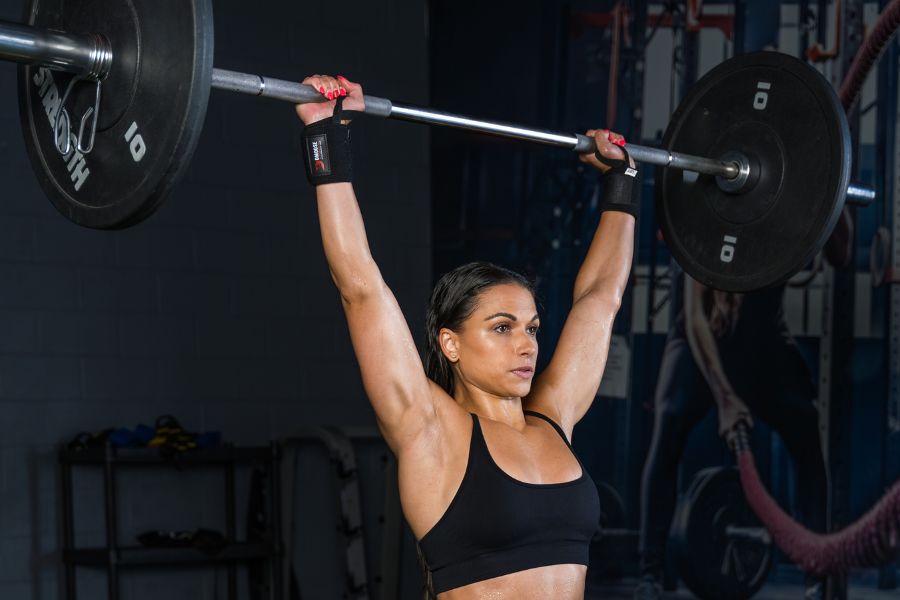
The Standing Barbell Overhead Press, also known as the Military Press, is a strength exercise. It targets the Triceps, upper back, and core muscles to provide stabilization.
How to do it
- Stand with your feet shoulder-width apart
- Hold the powerlifting barbell just wider than shoulder-width apart with palms facing forward
- Bring the barbell at shoulder height, resting it against your chest
- Press the barbell upward by extending your arms
- Slowly lower the barbell back to the starting position.
3. Landmine Overhead Press

The Landmine Press is a versatile and joint-friendly upper-body exercise that targets the shoulders, chest, and triceps. This exercise is known for its unique pressing angle of the barbell, which can be beneficial for those with shoulder issues.
How to do it
- Stand facing the barbell with your feet shoulder-width apart
- Grasp the end of the barbell with one hand at shoulder height
- Exhale and press the barbell upward by extending your arm fully
- Inhale and slowly lower the barbell back to the starting position
- Perform the desired number of repetitions.
Get more information regarding Landmine Overhead Press: Landmine Press
4. Barbell Z Press
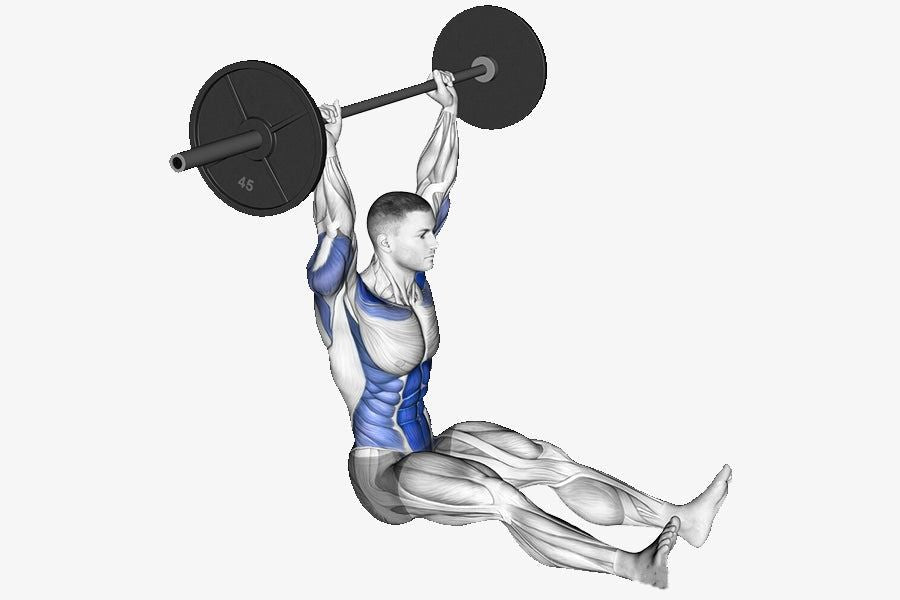
Barbell Z Press is an overhead weight-lifting exercise that targets the shoulder and increases strength and suitability. It is an effective exercise that stabilizes the spine as well.
How to do it
- Sit on the floor with your legs extended straight in front of you
- Hold a barbell at shoulder height with a grip slightly wider than shoulder width
- Exhale and press the barbell overhead, fully extending your arms
- Keep the elbow position straight during the overhead press.
- Inhale and slowly lower the barbell back to the starting position.
Study more about Barbell Z Press here: Z Press
5. Arnold Press
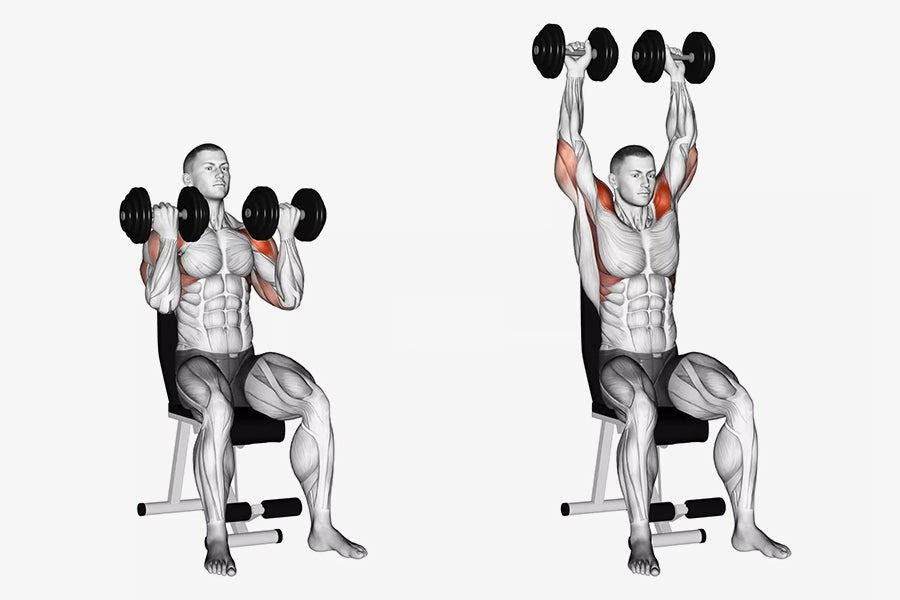
The Arnold Press is a unique and effective shoulder exercise. This exercise combines a shoulder press with a rotational movement, targeting multiple angles of the shoulder muscles.
How to do it
- Sit on a bench with back support or stand with feet shoulder-width apart
- Hold a weighted dumbbell in each hand in front of you at the chest level
- Your palms should be facing your body, and elbows should be bent
- Press the dumbbells upward and rotate your arms so that your palms face forward
- Lower the dumbbells, rotating your palms back towards you.
For in-depth information, click on this link: Arnold Press
Conclusion
Using weightlifting during overhead press has been proven a good choice that can increase your stamina and prevent back issues. But it’s important to choose the weightlifting belt based on your needs.
Finding all types of weightlifting belts or any other equipment in one place is very difficult, but you can find all of them at the DMoose store.
So what are you waiting for? Get your weightlifting belt today and start performing overhead Press without the fear of injurty.
Reading List
Master the Fit With a Quick Guide to Measuring a Weightlifting Belt
Weight Lifting Belt - the Absolute Protection You Need When Lifting Heavy Weights
Traveling With Your Lifting Belt: A Guide to Stay Fit On-The-Go
What Is a 10MM Lever Belt & How to Choose the Best One for Your Workouts?
Lever Vs. Prong Belt: How to Choose the Best One for Your Needs










